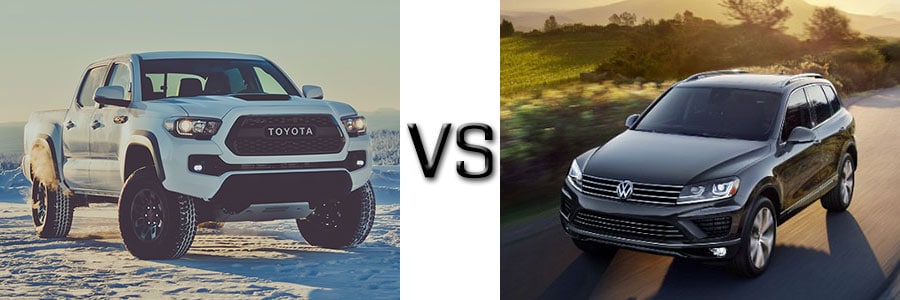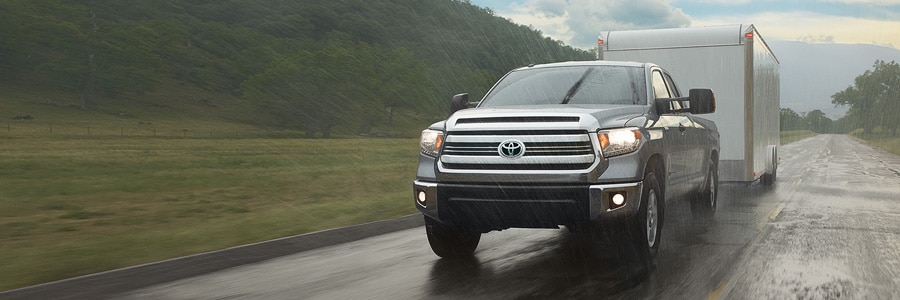SUV vs. Truck: Which One Should You Buy?
November 28, 2016

If you’re looking at SUVs and trucks, you’ve got cargo on your mind. Big cargo, small cargo, trips to the dump, trips to the warehouse club and everything in between-you want something that can give you options without sacrificing power. So which option is right for you?
Truck: When You Need Flexibility and Power
A truck is built to haul and it doesn’t much care what it hauls. Whether you are headed to the water and towing your boat or are headed Christmas shopping and plan on bringing home a tree, a truck is built to handle it all. That flexibility and adaptability can be really useful in everyday life, whether you are asked to help a friend move a couch or pick up a case of toilet paper, and luckily that adaptability doesn’t come by sacrificing drivability. Because the rear bed is separate from the cab, drivers have a lot more options. Heavy loads can be handled easily without worrying about damage to the interior and can be loaded easily as well without worrying about door clearance or height restrictions. Small cargo may get lost or fly out while driving, which is a concern, but a cargo net or truck box can solve that problem easily without sacrificing the benefits of an easy-to-clean, open truck bed.
Trucks aren’t especially fuel efficient, but they’re not much worse than some large SUVs and with fuel as cheap as it is right now, the price at the pump shouldn’t be a huge problem for truck buyers. One of the great benefits of trucks today is that they come with passenger options as well. Most models have a four-door option with a back seat, allowing trucks to seat five to six passengers fairly comfortably. While you might sacrifice some storage space on the inside, the exterior storage space certainly makes up for it.
Trucks are made for hauling and towing, but that doesn’t mean they can’t be good family vehicles as well.
SUV: Passenger Comfort and Cargo Options
Some people think that SUVs are just covered trucks, but SUVs actually have more in common with cars and vans than trucks with a similar unibody design and drivability. So, for the most part, SUVs cater to passenger comfort. Whether you choose a crossover, compact, midsize or full-size SUV, the first goal is to transport as many passengers as possible in comfort and style. Some SUVs can seat seven to nine people with a third-row option, which blows most vehicles out of the water (even minivans!). With interior options and style prized by most SUV manufacturers, drivers and passengers are riding in style with upgrades like onboard DVD players coming standard more and more.
SUVs can offer some serious cargo room, though, when passenger rows are stored. Some new models offer as much as 120 cubic feet of space, which may rival the storage capacity of some smaller trucks. That of course means that everyday trips to the grocery store are a breeze, but it also means that an SUV can also do great work during a move, hauling furniture, or even taking large loads to the dump or donation center. A couple of things to consider: with carpet comes challenges for messy loads, doors that don’t open wide can make cargo loading a challenge, and although your SUV can tow your boat to the water that doesn’t mean it will be able to pull it up the ramp without complaining. While there’s plenty of room in an SUV for cargo, the type of cargo matters.
SUVs are made for moving people and their stuff, but that doesn’t mean it can’t do some hauling as well.


